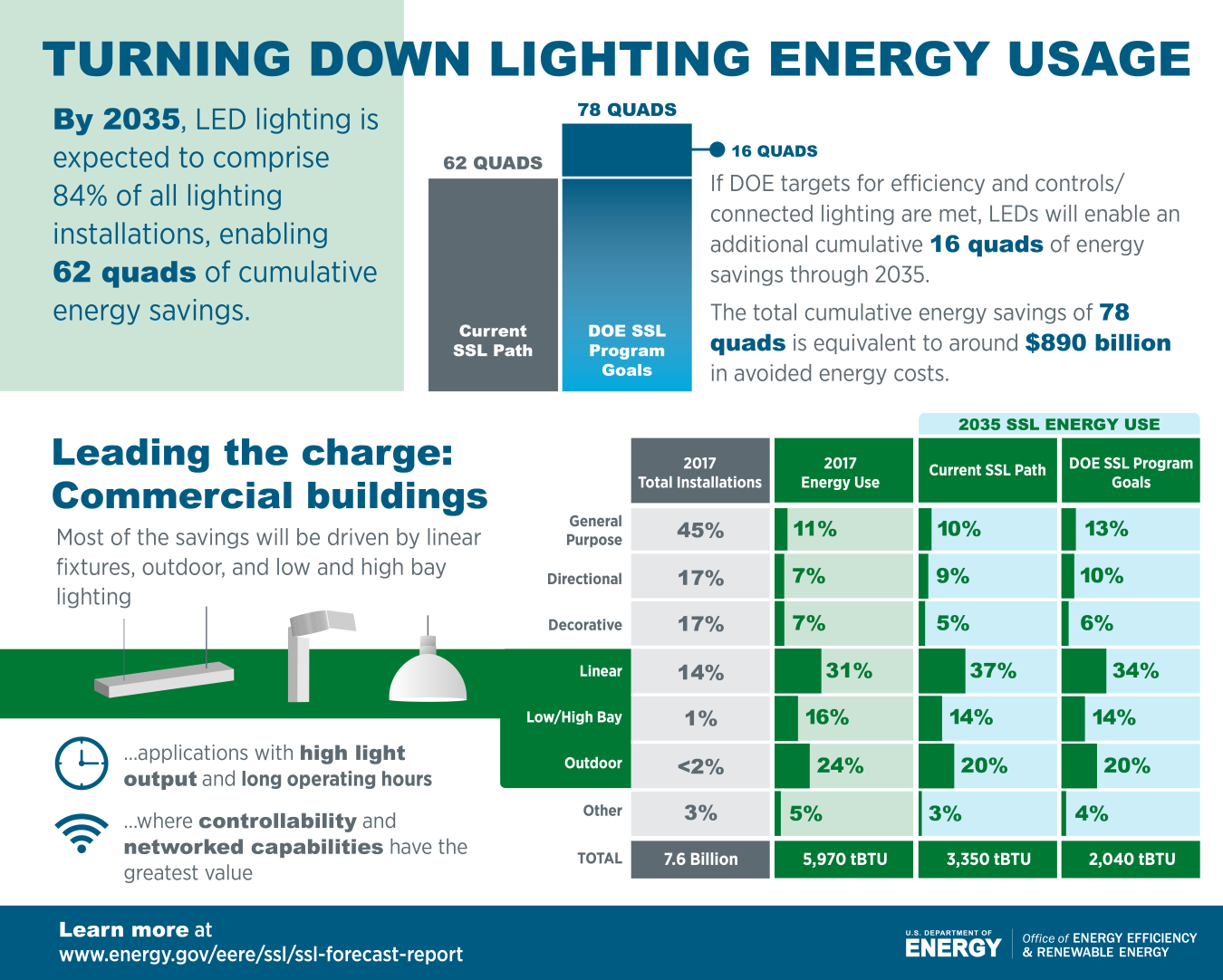The U.S. Department of Energy (DOE) has published the latest edition of its biennial report, Energy Savings Forecast of Solid-State Lighting in General Illumination Applications, which models the adoption of LED lamps and luminaires in the U.S. general-lighting market, along with associated energy savings based on the full potential DOE has determined to be technically feasible over time.
The new report projects that energy savings from LED lighting will top 569 TWh annually by 2035, equal to the annual output of more than 92 1,000-MW power plants, if DOE Lighting R&D program goals are achieved. Among the key findings:
- By 2035, LED lamps and luminaires are anticipated to hold the majority of lighting installations, comprising 84% of all applications.
- LED lighting enabled 1.1 quads of energy savings in 2017, resulting in $12 billion in savings for U.S. consumers.
- If LED lighting installations continue at the current pace, a total annual energy savings of 4.8 quads is possible by 2035. 12% of that total will be made possible by the penetration of connected LED lighting.
- If DOE’s aggressive targets for efficiency are met, LED lighting will enable 1.3 quads in annual energy savings in 2035, beyond the annual energy savings projected at the current level of effort.
Most of the projected energy savings in 2035 will be driven by increased use of LED lighting in commercial and industrial buildings and outdoor lighting applications – applications characterized by high light output and long operating hours. Furthermore increased controllability and networked capabilities will provide the greatest value and savings (while traditional control strategies will still significantly contribute).

From 2017 to 2035, a total cumulative energy savings of 78 quads is possible if DOE SSL program goals for LED efficiency and controls/connected lighting are achieved. This is equivalent to approximately $890 billion in avoided energy costs over that period.
Download the full report.

